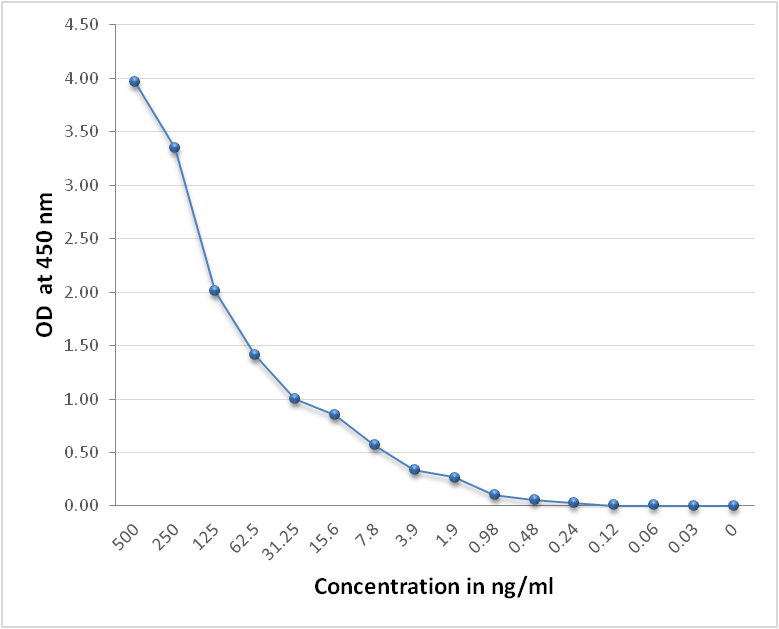Monoclonal Antibody to VEGF-R1 / FLT-1(Clone : FLT1/659)(Discontinued)
Shipping Info:
For estimated delivery dates, please contact us at [email protected]
| Format : | Purified |
| Amount : | 100 µg |
| Isotype : | Mouse IgG1 Kappa |
| Purification : | Affinity Chromatography |
| Content : | 100 µg in 500 µl PBS containing 0.05% BSA and 0.05% sodium azide. Sodium azide is highly toxic. |
| Storage condition : | Store the antibody at 4°C; stable for 6 months. For long-term storage; store at -20°C. Avoid repeated freeze and thaw cycles. |
Three cell membrane receptor tyrosine kinases, Flt-1 (also designated VEGF-R1), Flk-1 (also designated VEGF-R2) and Flt-4, putatively involved in the growth of endothelial cells, are characterized by the presence of seven immunoglobulin-like sequences in their extracellular domain. These receptors exhibit high degrees of sequence relatedness to each other as well as lesser degrees of relatedness to the class III receptors including CSF-1/Fms, PDGR, SLFR/Kit and Flt-3/Flk-2. Two members of this receptor class, Flt-1 and Flk-1, have been shown to represent high affinity receptors for vascular endothelial growth factors (VEGFs). On the basis of structural similarity to Flt-1 and Flk-1, it has been speculated that Flt-4 might represent a third receptor for either VEGF or a VEGF-related ligand.
Flow Cytometry (0.5-1µg/million cells in 0.1ml); Immunofluorescence (1-2µg/ml); Functional Studies (Order Ab without BSA & Azide); Optimal dilution for a specific application should be determined.
For Research Use Only. Not for use in diagnostic/therapeutics procedures.
| Subcellular location: | Cytoplasm |
| Post transnational modification: | Autophosphorylated on tyrosine residues upon ligand binding. Autophosphorylation occurs in trans, i.e. one subunit of the dimeric receptor phosphorylates tyrosine residues on the other subunit. Phosphorylation at Tyr-1169 is important for interaction with PLCG. Phosphorylation at Tyr-1213 is important for interaction with PIK3R1, PTPN11, GRB2, and PLCG. Phosphorylation at Tyr-1333 is important for endocytosis and for interaction with CBL, NCK1 and CRK. Is probably dephosphorylated by PTPRB. |
| Tissue Specificity: | Detected in normal lung, but also in placenta, liver, kidney, heart and brain tissues. Specifically expressed in most of the vascular endothelial cells, and also expressed in peripheral blood monocytes. Isoform 2 is strongly expressed in placenta. Isoform 3 is expressed in corneal epithelial cells (at protein level). Isoform 3 is expressed in vascular smooth muscle cells (VSMC). |
| BioGrid: | 108609. 14 interactions. |
|
There are currently no product reviews
|














.png)












